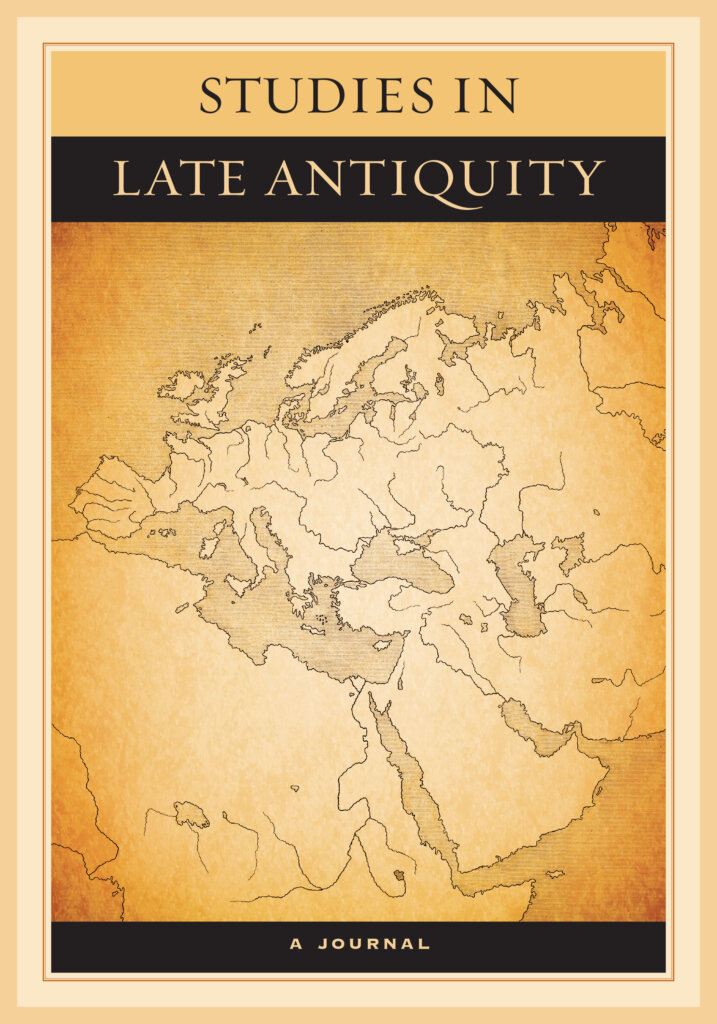by Jonas Borsch, author of “God’s Wrath over Antioch, 525–540 CE: Beginning of the End?” from the new special issue of Studies in Late Antiquity

It has now been about four months since south-eastern Turkey and northern Syria were struck by the strongest earthquake ever measured in this region, causing immense destruction and suffering. Among the most affected cities was Antakya, the ancient metropolis of Antioch. Antioch played a significant role in my dissertation on earthquakes in the ancient Eastern Mediterranean (published in 2018), and it is at the center of a new special issue of Studies in Late Antiquity, to which I am a contributor. In my research, I have investigated ancient earthquakes as both cultural and physical phenomena, placing particular emphasis on the interrelationship between perceptions of and social responses to earthquakes. Antioch served as an important case study since it is located in a zone of high seismic activity. Having worked on this region, the news about the recent massive earthquake at Antakya greatly disturbed me, but, sadly, it was also no surprise. While the future of modern Antakya remains uncertain, investigating historical cases of seismic events in this area has taught me that there is a strong local tradition of faith in recovery and resilience.
Ancient sources clearly indicate that Antioch has been susceptible to disasters since its foundation in the third-century BCE. In addition to the many earthquakes that affected it due to its geographical proximity to the East Anatolian fault, the city experienced multiple urban fires, floods, famines, epidemics, and foreign sacks. Yet, despite this history of calamities, Antioch remained a vibrant center of cultural and economic activity throughout Antiquity, reaching its peak during the period of Late Antiquity (ca. 200–700 CE). Even a cursory glance at the city’s history tells us that the frequency (or rarity) of disasters does not predict the long-term trajectory that an urban center will follow. Factors such as the booming agricultural production in Antioch’s late ancient rural hinterlands or its important strategic position in relation to the Roman Empire’s eastern border outweighed the repeated physical destruction of its urban fabric.
The susceptibility of Antioch to natural and political risks was felt acutely at the local level. Late ancient commentators in particular put disasters at the core of their narratives about this city. Authors like John Malalas, Procopius of Caesarea, and Evagrius Scholasticus, all writing in the sixth century, have provided us with long accounts of Antiochean earthquakes. Descriptions of these events mirror the horrible scenarios known from recent earthquake reports, even in the details they give about the impossibility of escape, the totality of destruction, and the rumors of looting amid the ruins. At the same time, it is striking that the aftermath of the ancient events is often framed in a positive way: We hear of people being saved miraculously from the rubble after weeks, of looters who are punished with sudden illness or death for their sins, and of the appearance of a holy cross in the sky over Antioch announcing its purification. All these phenomena, our Christian commentators tell us, showed that God had not given up upon the city.
These commentators, in other words, interpreted the harmful events in the light of their faith. They explained the ever-repeating recurrence of disasters in Antioch’s history as part of a heavenly plan designed to lead the city to a prosperous, purified future. It is difficult to decide how strongly this narrative of resilience caught on beyond literary circles. Although the work of Malalas, for example, has been thought to convey a “popular” world view, it also clearly represents a perspective in which criticism of current political conditions has no part to play. In such accounts, potential human influences on the scope and scale of disasters are almost completely factored out, in sharp contrast to the present awareness of how corruption in the the construction sector has exacerbated the deadly impact of the latest earthquake. Meanwhile, the late antique sources present official disaster relief as part of the divine plan of salvation. The narrative aligns with the official version of what happened.
A view into history, thus, does not provide us with ready recipes to adequately deal with disasters in our own times. However, it does point to one important heritage that seems to have survived all Antiochean disasters: the belief in the city’s capacity to recover.

Read SLA‘s special issue on crises in Antioch, including Jonas Borsch’s “God’s Wrath over Antioch, 525–540 CE: Beginning of the End?” for free for a limited time.
